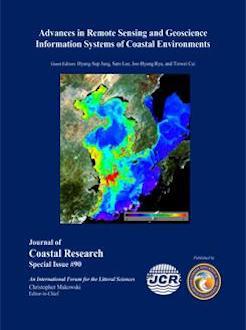Park, J.; Kwon, Y.S.; Baek, S.H.; Lim, W.A.; Park, J.; Jang, J., and Park, Y., 2019. Identifying environmental effects on an annual variation in Margalefidinium polykrikoides in the South Korean sea using statistical analysis. In: Jung, H.-S.; Lee, S.; Ryu, J.-H., and Cui, T. (eds.), Advances in Remote Sensing and Geoscience Information Systems of Coastal Environments. Journal of Coastal Research, Special Issue No. 90, pp. 11-18. Coconut Creek (Florida), ISSN 0749-0208.
Understanding harmful algal blooms is imperative for protecting aquatic ecosystems and human health. This study describes spatial and temporal distributions of dinoflagellate Margalefidinium polykrikoides blooms to understand the relationship between blooms and environmental factors in the South Korean Sea. A regression tree model, which is a binary recursive partitioning method, analyzed 20 years of long-term monitoring data such as hydrodynamic, water quality, and bloom density data to investigate the relationship. The results showed that all independent (i.e., hydrodynamic and water quality data) and dependent (i.e., bloom density) variables were not significantly different between the Goheung-Yeosu and Yeosu-Namhae areas (p-values > 0.05). Variations in the M. polykrikoides blooms predominantly depended on variations in the amount of Yangtze River discharge of china (first split variable in Yeosu-Namhae area) and current velocity (second and fourth split variables in the Goheung-Yeosu and Yeosu-Namhae areas, respectively) from the mouth of the Yangtze River to the South Korean Sea. The increase in Yangtze River discharge, which led to changes in ratio of nitrogen to phosphorus, had a negative effect on the increase in M. polykrikoides cell. Interpretation of relationship using a regression tree can be a useful approach to evaluate the causality between environmental factors and M. polykrikoides blooms.





